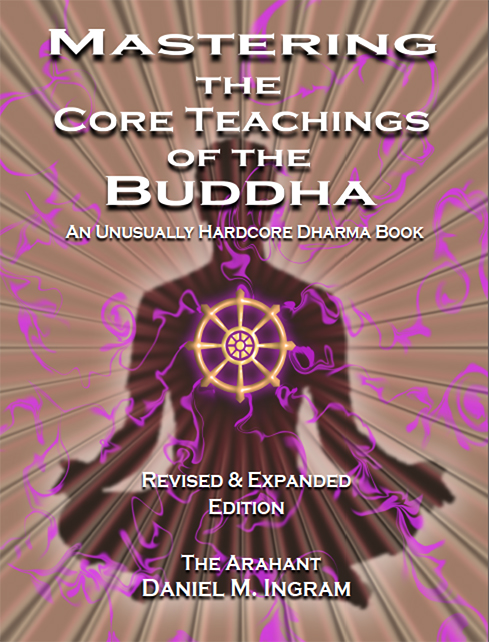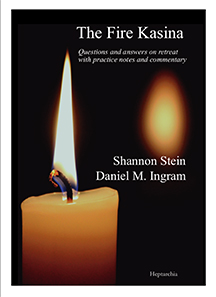The Three Yanas
← The Meaning Models | Ditching our “Stuff” versus Ditching the Split →
While I am generally a diehard fan of the Theravada, I have great appreciation for much of the rest of Buddhism and the world’s other great mystical traditions. In that spirit, I offer what follows. Traditional Tibetan training is broken down into at least “three yanas” or “vehicles”: the Hinayana, the Mahayana, and the Vajrayana. These correspond very nicely to the developmental needs of practitioners at various stages of the simple model presented earlier.
The Hinayana is a set of techniques and practices that closely resembles many of the traditional trainings of the Theravada, and these are often conflated for this reason. (There are some very loose historical relationships between the two that I do not wish to go into.) The Hinayana’s emphasis is on basic morality, stabilizing the mind, and investigating the three characteristics, that is, all the fundamental practices and emphases that I mentioned in Part One. It is designed to get a person to the first stage of awakening, or first path, which the Tibetans would call third path in the Tibetan five-path model, or attaining the first bhumi.
Getting to the next stage of the simple model or third path involves a deep appreciation of interconnectedness in real time and a willingness to surrender to it. The Mahayana path provides methods for understanding this with its strong emphasis on benefitting all beings and on the emptiness (shunyata) of phenomena. The bodhisattva vow, a fundamental part of the Mahayana path, not only expresses a deep willingness to surrender to and understand interconnectedness, it also, if well-practiced, encourages practitioners to stay engaged with this world and avoid turning their backs on the suffering of unawakened beings. One of the interesting things about the Mahayana is that you must have a certain foundation of practice and insight to practice at that level.
Unfortunately, just as studies show that most people think they are above average, many people who identify as Mahayana Buddhist don’t necessarily have the realizations in common with the fundamental vehicle (Hinayana) paths (realizations of the three characteristics), nor do they necessarily realize that to really practice the Mahayana you have to have some strong understanding of relative and ultimate bodhicitta, the deep aspiration to work for the benefit and full awakening of all beings and a direct experience of what awakening actually involves. So, if you don’t have that, strongly consider doing the foundational practices that might get you that understanding, and consider that the Theravada provides a degree of efficacious, technical sophistication that can make that process much easier. I personally find applying the Mahayana motivation and Theravada methods quite empowering, not that very similar motivating factors don’t exist in the Theravada.
To get to the next stage, we must completely understand the intrinsic luminosity of all transient phenomena without exception. The Vajrayana path, with its emphasis on intrinsic luminosity and tantric techniques that work with the awakened nature of the fullness of the emotional range and the richness of this human life, fits very well with the needs of those trying to gain the understanding that emptiness is form. Dzogchen and mahamudra teachings also explicitly emphasize the luminosity of transient phenomena and that all things are of the nature of truth. I absolutely love the book Clarifying the Natural State, by Dakpo Tashi Namgyal, who is one hard-hitting, pithy, no-nonsense yogi, and takes on these topics with an ease, power, and clarity rarely found anywhere.
I am still a big fan of the Theravada, but I have a strong appreciation for the tailored beauty of the three yana system of the Tibetans. It has an uncanny sophistication and explains part of what happens developmentally even if you are following Theravada techniques or those of another wisdom tradition. I am also a big fan of Zen, particularly its strong emphasis on keeping things down-to-earth, as articulated in the well-known saying: “After the ecstasy, the laundry.” As always, it is not the tradition which is important, but that it works for you.
In this spirit, there is a yana called the “Ekayana”, the “one vehicle”, which comes to us from texts such as “The Lotus Sutra” and “The Avatamsaka Sutra”. In this view, all the Buddhist teachings are part of the same vehicle, and all may be drawn on to help us on our paths. This is very much the spirit in which I have proceeded, and I am grateful to those who promote this integrative view. It is not that discriminating between the three yanas (or nine, as the Nyingma school describes) has no value, as it does, but that we can keep a broader perspective than these might allow so that we can benefit ourselves and those around us by adopting terminology and techniques appropriate to various individuals and situations. Further, people who appreciate the Ekayana perspective are typically less fundamentalist and provincial in their approach to Buddhism and indeed to all spiritual traditions.
Further, what happens in real life is that at times we retreat from the world and develop core meditative and spiritual trainings, at times we feel compelled to go and help the world, and at times we are ill or incapacitated to some degree and we hope the world helps us instead. Thus, those who do actual reality testing will find that anyone who claims to follow a specific yana instead typically oscillates between the stereotypical perspectives of them all at various times, both in terms of attitude and function. In this way, having a flexible attitude can allow us to assess our actual changing needs, capabilities for helping ourselves and others, and our current circumstances and heart so that we adopt all of these valid perspectives on our relationship to meditative training and on making the world a better place. Speaking of engagement with the world and on making the world a better place, check out the works of Jay Michaelson, particularly his book Evolving Dharma: Meditation, Buddhism, and the Next Generation of Enlightenment.
Perhaps a bit tangentially, a yana I might advise some caution regarding is what I call “the Wikiyana”, which involves people’s tendency to inform themselves or practice from stuff they find on the internet, devoid of the other conducive structures of community and context that help support those practices. Now, don’t misunderstand me: the internet has provided staggering amounts of useful dharma information (as well as useless and inaccurate misinformation) beyond anything previously seen in history, and made it available to people who would otherwise never have been able to access it. When I was coming up in this stuff one literally could have read every dharma book that was easily available and then exhaust the obscure stuff through interlibrary loans. These days, that would be nearly impossible; much less could one keep up with the staggering amount of hyper-proliferative online dharma information in other forms.
The Wikiyana, coupled with good spiritual friends and good practice, can be extremely powerful, reaching people in numbers previously unthinkable to everyone except perhaps the guy(s) who came up with the bhumis, and this is a great thing. Online dharma can also be a massive, distracting, overwhelming time-suck that detracts from focusing on core practices and simple truths. So, if you follow the Wikiyana, find people to hang out with who have benefitted from the great and qualified teachers who do exist, friends who know the path well for themselves, and please also strongly consider finding out more about the supports that are found in the original traditions and drawing on those.
Remember to focus on your practice and beware of getting entangled in the ever-addictive and sometimes crazy world of online dharma. Also, be careful with what online dharma you practice, and discuss it with ones who are doing those techniques so you get a sense of what they lead to. Some practices done out of context or without reasonable foundational practices can be ineffective or, worse, can cause strange and/or unwanted effects due to misconceptions, misapplications, and can even be extremely dangerous—more on that later. The information in this book is among the sources that have significant danger potential, as mentioned many times so far and will be mentioned many more.
Finally, back to the maps. The non-duality models are the only models of awakening that hold up without apology, qualification, or exception. The rest of the models have serious problems, though each do contain partial truths, however inadequately conveyed, given our cultural context and the social complexity within which we exist. Given sufficient experience of the real world, those who believe in literal interpretations of such models as the limited emotional range models and limited possible action models will either:
1) be forced to conclude that no living being meets their definitions of enlightenment;
2) be forced into a dark corner of borderline-psychotic rationalizations of what actually happens; or:
3) be forced to have a very rude awakening indeed (pun intended).
To my mind, there is only one thing worse than students getting caught up in the dogma of the worst of the models, and that is realized teachers insisting on those models. Just as it is disappointing when those with long retreat résumés but no fundamental insight want to encourage faith in their beautiful tradition by appearing to know more than they do, it is doubly disappointing when realized beings get caught in these archaic models, acting as if the models worked in the fantasy-land way that some people think they do. I know exactly where they are coming from and how tempting this is, but I dream of a day when such things never happen. The dharma world would be so much better off if teachers were honest about what realization is and ain’t, both with themselves and with their students. Don’t think this sort of dishonesty doesn’t occur. I have seen some of my very best and most realized teachers fall into this trap and have also done so myself more times than I can count. Learn from those who have had to learn the hard way and are willing to admit this.
← The Meaning Models | Ditching our “Stuff” versus Ditching the Split →

